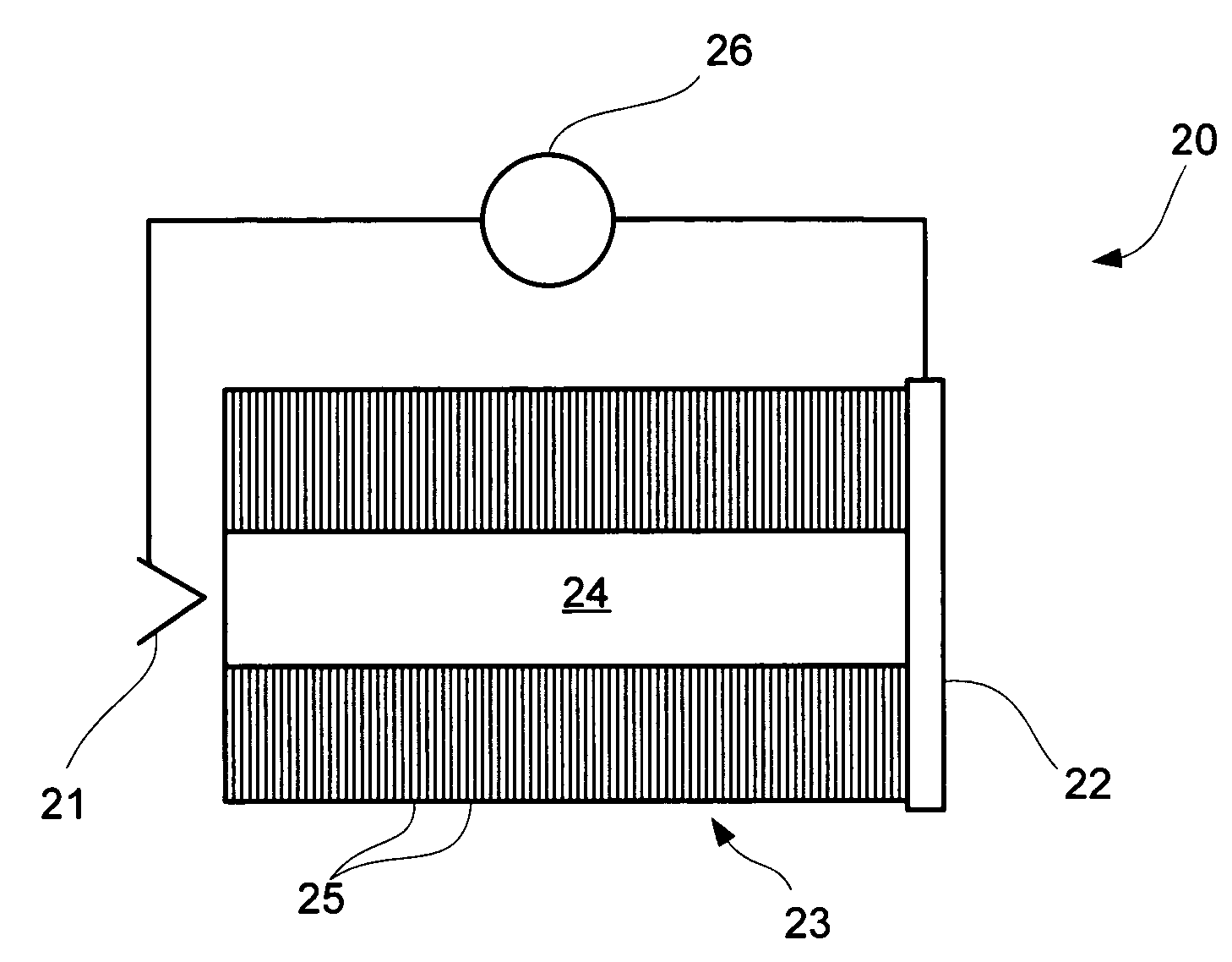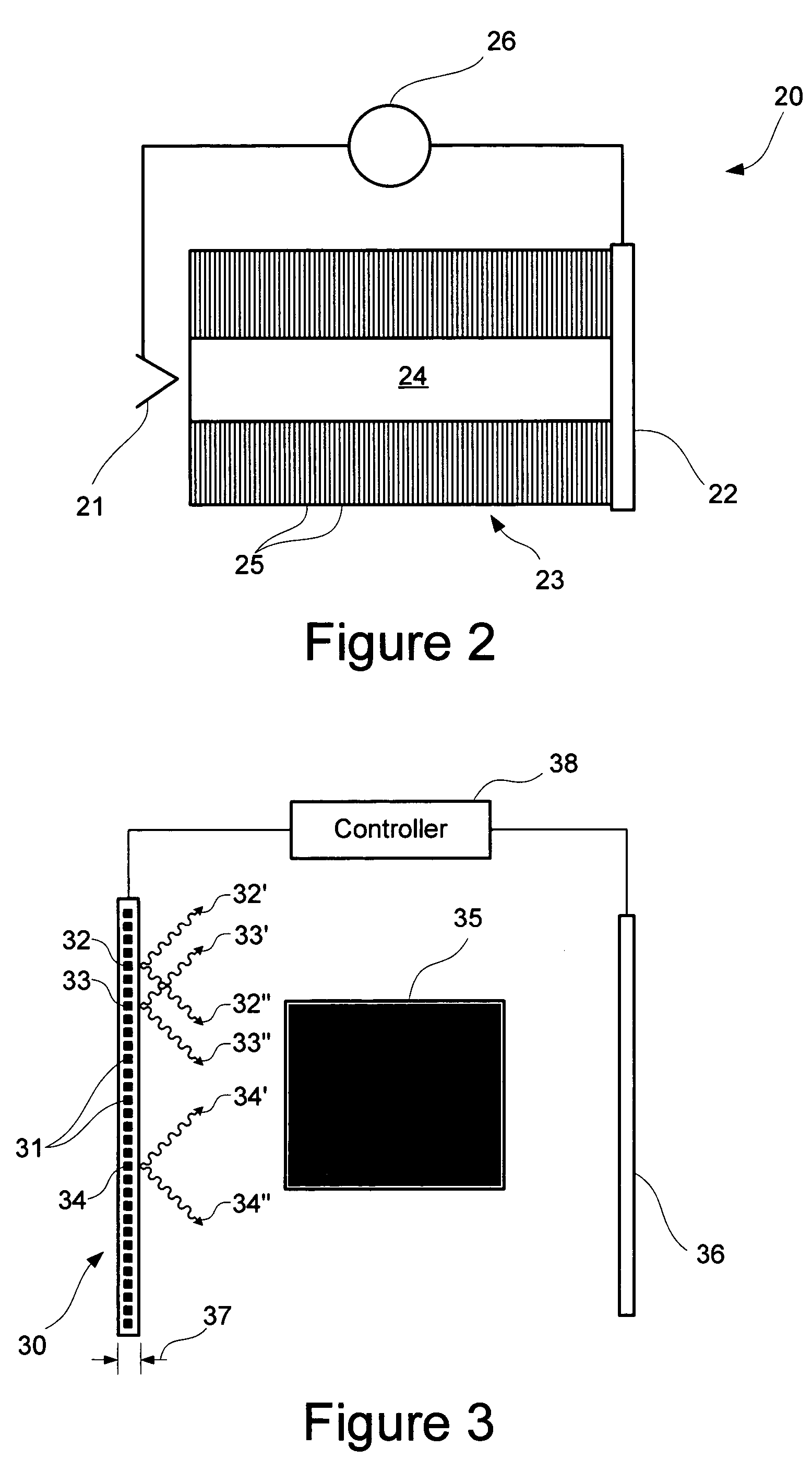Compact x-ray source and panel
a x-ray source and panel technology, applied in the field of x-ray generating systems, can solve the problems of large system size, large system volume, cumbersome, etc., and achieve the effect of small volume, small difference in potential, and short drift distance/spacing
- Summary
- Abstract
- Description
- Claims
- Application Information
AI Technical Summary
Benefits of technology
Problems solved by technology
Method used
Image
Examples
Embodiment Construction
[0019]Turning now to the drawings, FIG. 2 shows a preferred embodiment of a single unit x-ray source of the present invention, generally indicated at reference character 20. The x-ray source 20 is shown having an electron source 21 for producing electrons, an x-ray conversion target 22 capable of generating an x-ray beam when incidenced by electrons, an insulator 23 separating the electron source 21 and the x-ray conversion target 22, and a power supply 26 electrically connected to the electron source 21 (cathode) and x-ray conversion target 22 (anode) to produce a voltage potential, i.e. an acceleration gradient, in the drift space 24 therebetween which accelerates electrons toward the x-ray conversion target 22.
[0020]The electron source 21 is preferably a heated filament which emits electrons when hot. In the alternative, various types of electron sources which are individually controllable may be utilized, such as for example, thin film ferroelectric emitters, pulsed hybrid diamo...
PUM
 Login to View More
Login to View More Abstract
Description
Claims
Application Information
 Login to View More
Login to View More - R&D
- Intellectual Property
- Life Sciences
- Materials
- Tech Scout
- Unparalleled Data Quality
- Higher Quality Content
- 60% Fewer Hallucinations
Browse by: Latest US Patents, China's latest patents, Technical Efficacy Thesaurus, Application Domain, Technology Topic, Popular Technical Reports.
© 2025 PatSnap. All rights reserved.Legal|Privacy policy|Modern Slavery Act Transparency Statement|Sitemap|About US| Contact US: help@patsnap.com



